Delina H. Bishop, Stacy Sweeney, Michael Sweeney
ABSTRACT
A 47-year-old male Army Veteran diagnosed with post-traumatic stress disorder (PTSD), traumatic brain injuries (TBI), and significant environmental contaminants exposure induced constrictive bronchiolitis participated in a 12-week study evaluating the effectiveness of a multi-modal treatment approach. The regimen included intermittent hyperoxic/hypoxic training (IHHT), red light therapy, neurofeedback, NAD+ IV infusions, and oral supplementation.
The study observed significant improvements in PTSD and depression scores, qEEG neurofeedback results, pulmonary capacity, and subjective client benefits, underscoring the effectiveness of short-term interventions and an IHHT-centric protocol.
Case Report
The patient presented with chronic PTSD, unspecified focal TBI with loss of consciousness (unspecified duration), concussion with loss of consciousness (unspecified duration), occupational exposure to air contaminants, and constrictive bronchiolitis. Symptoms included hypervigilance, insomnia, negative thought patterns, poor focus derived from PTSD/TBI symptoms, and poor cardiovascular capability due to environmental contaminants exposure.
Measurable Outcomes
- PCL-5 Assessment: Decreased from 39 (pre-protocol), 18 (mid-protocol), and 3 (post-protocol). Scores below 35 indicate <15% probability of PTSD.
- PHQ-9 Assessment: Decreased from 12 (pre-protocol), 4 (mid-protocol), and 0 (post-protocol), indicating improvement from moderate to minimal depression.
- PSQI Sleep Assessment: Mid-protocol score of 8, post-protocol score of 4. Scores below 5 indicate good sleep quality.
- qEEG Brain Mapping: Mid-protocol scores showed 33% plasticity and 52% normalization, and post-protocol results showed 40% plasticity and 39% normalization. Scores over 30% plasticity and 35% normalization are considered outstanding.
- Cognitive Emotional Checklist (CEC): Pre-to-post protocol responses improved by 31%, 78%, 17%, 86%, and 53%, respectively.
- Veteran’s Physical Data:
- Increase in skeletal muscle mass by 3 lbs
- Decrease in body fat by 2.5%
- Improved lung capacity
- Veteran now sleeps 7-8 hours nightly
- Veteran was able to return to running
Subjective Outcomes
“After just four weeks, this program has already increased my focus, energy, and motivation to levels I haven’t seen in years! I’m so thankful for the opportunity to be participating.”
“After struggling with insomnia for several years, this program has provided me with the education, physical, and mental training that resulted in restful sleep, something I thought would never be possible again.”
Discussion
This case report demonstrates the effectiveness of a multi-modal treatment for the symptoms of post-traumatic stress and traumatic brain injuries over a 12-week period. The study followed a protocol addressing root causes, focusing on enhancing angiogenesis and neurogenesis in the brain through oxygen modalities, enhancing ATP production through NAD+ and photobiomodulation, minimizing brainwave dysregulation with qEEG neurofeedback, and diminishing gut-brain axis neurochemical imbalances through supplementation. The data from this regimen will significantly impact future treatment protocols for Veterans and First Responders suffering from PTSD and TBI.
OPTI Health Lake Norman
www.optihealthlkn.com
August 2024
Contact Information
- Delina Bishop, MD – Medical Director OPTI Health Lake Norman ([email protected])
- Stacy Sweeney, MSPT, MS – Founder, Director Neurocognitive Services OPTI Health Lake Norman ([email protected])
- Michael Sweeney, MBA – Founder and Chief Executive Officer OPTI Health Lake Norman ([email protected])
REFERENCES
- Tal S, Hadanny A, Sasson E, Suzin G, Efrati S. Hyperbaric Oxygen Therapy Can Induce Angiogenesis and Regeneration of Nerve Fibers in Traumatic Brain Injury Patients. Front Hum Neurosci. 2017 Oct 19;11:508. doi: 10.3389/fnhum.2017.00508. PMID: 29097988; PMCID: PMC5654341.
- Bayer U, Likar R, Pinter G, et al. Intermittent hypoxic-hyperoxic training on cognitive performance in geriatric patients. Alzheimers Dement (N Y). 2017;3(1):114-122. Published 2017 Feb 8. doi:10.1016/j.trci.2017.01.002
- Radenkovic D, Reason, Verdin E. Clinical Evidence for Targeting NAD Therapeutically. Pharmaceuticals (Basel). 2020;13(9):247. Published 2020 Sep 15. doi:10.3390/ph13090247
- Hamblin MR. Photobiomodulation in the brain: low-level laser (light) therapy in neurology and neuroscience. In: Hamblin MR, ed. Photobiomodulation in the Brain: Low-Level Laser (Light) Therapy in Neurology and Neuroscience. Academic Press; 2019:1-630. doi:10.1016/C2017-0-02758-1.
- Dahl MG. Neurofeedback with PTSD and traumatic brain injury (TBI). In: Kirk HW, ed. Restoring the Brain: Neurofeedback as an Integrative Approach to Health. Routledge; 2020:256-284. doi:10.4324/9780429275760-13.
- Ceremuga TE, Martinson S, Washington J, et al. Effects of L-theanine on posttraumatic stress disorder-induced changes in rat brain gene expression. ScientificWorldJournal. 2014;2014:419032. doi:10.1155/2014/419032
- Unno K, Yamada H, Iguchi K, et al. Anti-stress Effect of Green Tea with Lowered Caffeine on Humans: A Pilot Study. Biol Pharm Bull. 2017;40(6):902-909. doi:10.1248/bpb.b17-00141
- Savignac HM, Couch Y, Stratford M, et al. Prebiotic administration normalizes lipopolysaccharide (LPS)-induced anxiety and cortical 5-HT2A receptor and IL1-β levels in male mice. Brain Behav Immun. 2016;52:120-131. doi:10.1016/j.bbi.2015.10.007
- Messaoudi M, Violle N, Bisson JF, Desor D, Javelot H, Rougeot C. Beneficial psychological effects of a probiotic formulation (Lactobacillus helveticus R0052 and Bifidobacterium longum R0175) in healthy human volunteers. Gut Microbes. 2011;2(4):256-261. doi:10.4161/gmic.2.4.16108


